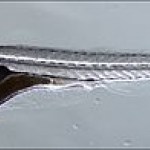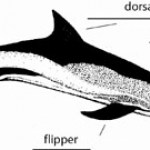swim
Photo of zebrafish (Danio rerio) by Azul (Own work) [Copyrighted free use], via Wikimedia Commons
We all know that aerobic exercise is good for us because it helps improve muscle function and our ability to move well. For fish, aerobic exercise helps animals escape predators, catch prey as well as improve reproduction success. When we exercise, our muscles adapt by altering the metabolism of energy, the way calcium is handled as well as the type of contractile proteins present in the muscle. Together these changes alter how muscles contract. Histone deacetylases (HDAC) are known to…
As I was perusing YouTube I came across a video from National Geographic that I must admit was fascinating while at the same time disturbing. The video describes how rats are able to travel from the sewer into your toilet.
Although this is reportedly an uncommon occurence, I will be sure to look before I sit from now on.
With the help of advice from a manicurist, Dr. Kate Mansfeld (University of Central Florida) has come up with a way to track hatchling sea turtles for the first time. After hatching, the turtles head straight for the ocean where they grow for about 10 years or so before returning to the same beach where they hatched. Until now, researchers have wondered how these juvenile turtles spent their time.
Source:Scientific American
Image of a zebrafish larva from (NHGRI Press Photos).
Calcium is very important for the normal development, growth and survival of most vertebrates. Therefore, regulation of calcium intake and disposal is well-controlled. Mammals obtain most of their calcium from the diet, whereas fish obtain calcium by absorbing it from the external environment. For adults, this occurs in the gills and for larvae it is absorbed through the skin. What this means is that fish living in low calcium environments can acclimate by increasing the absorption of calcium from the water.
Dr. Kwong (Dept. of Biology…
Gray's paradox was originated by the zoologist James Gray in 1936 (J. Exp. Biol. 13: 192–199, 1936). The paradox questioned how a dolphin is able to swim fast (~10.1 meters per second according to his calculations) with what he saw as a limited ability to generate that much power. Therefore, he concluded that dolphins must have some mechanism or adaptation to reduce drag (Davidson College).
More recently, Dr. Frank Fish (West Chester University, Pennsylvania) was quoted in The Scientist saying, “To resolve the paradox was to assume that flow over the dolphin’s body is laminar, meaning that…
Dr. Carl Meyer (University of Hawaii) and Dr. Katsufumi Sato (University of Tokyo) have teamed up to gather data about shark behavior in a rather interesting way. They flipped the animals upside down, which makes them relax, and strapped on cameras and instruments that will facilitate the creation of 3D models of shark movements. Using accelerometers, they are able to measure speed while magnetometers record the magnetic field and additional tools measure the water temperature and depth. The video is used to help contextualize these other data.
Sources:
University of Hawaii
National…
Spent the day at the Brookfield Zoo and was lucky enough to catch a resident polar bear inventing games for himself and doubly lucky my fiancee brought a video cam.
Polar Bear Takes a Dive
Polar Bear Tossing Around His Toy
More below the fold
Polar Bear Balances Toy on Nose and Paw
A novel approach to connecting people and animals while generating new revenue or exploitation and poor judgment from those who should know better?
The Georgia Aquarium announced this morning a new program that allows regular Joe Public to swim with their famed whale sharks, among other critters, in their largest tank. For the low price of $199 a swim or $290 for a SCUBA dive (actually quite a deal compared with traveling to the Philippines or one of the other exotic locales where you might get a chance to dive with them), you get a guaranteed swim with these biggest of all fishes. It looks…

